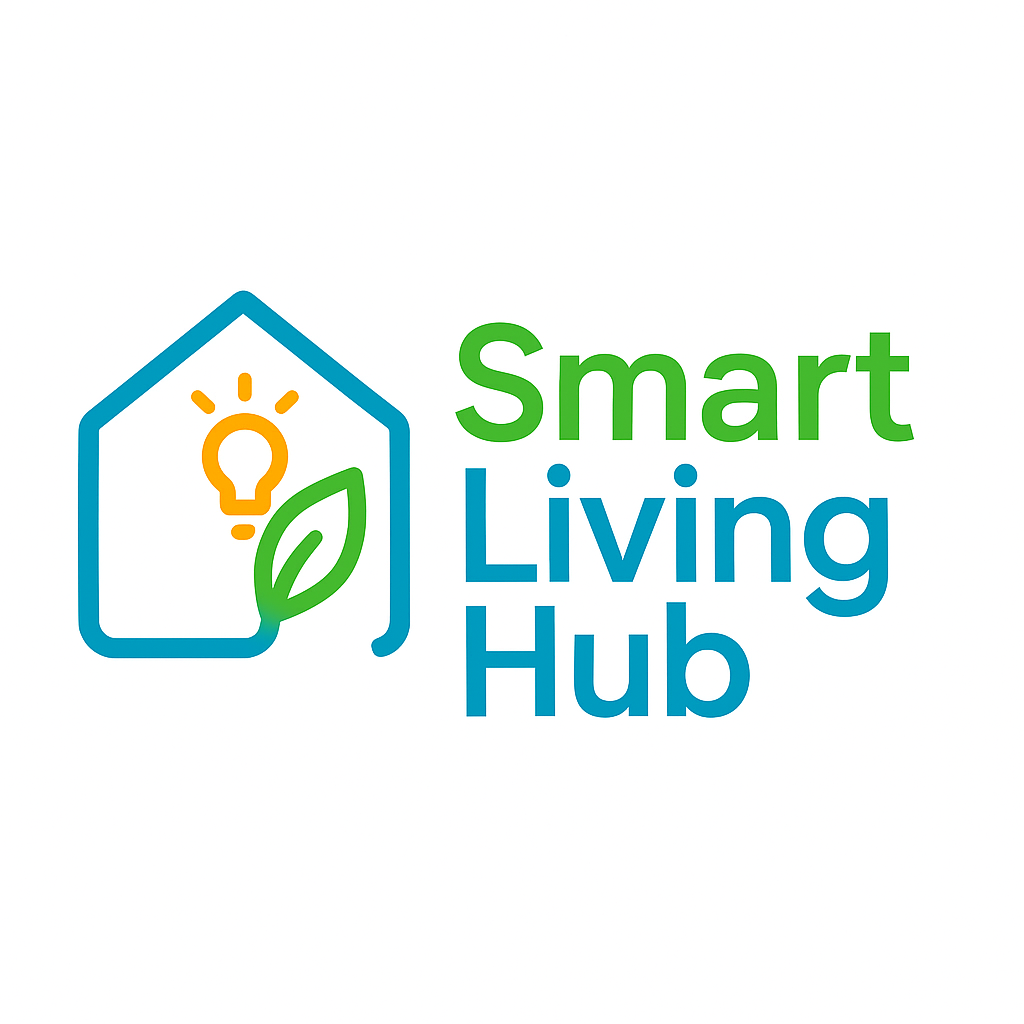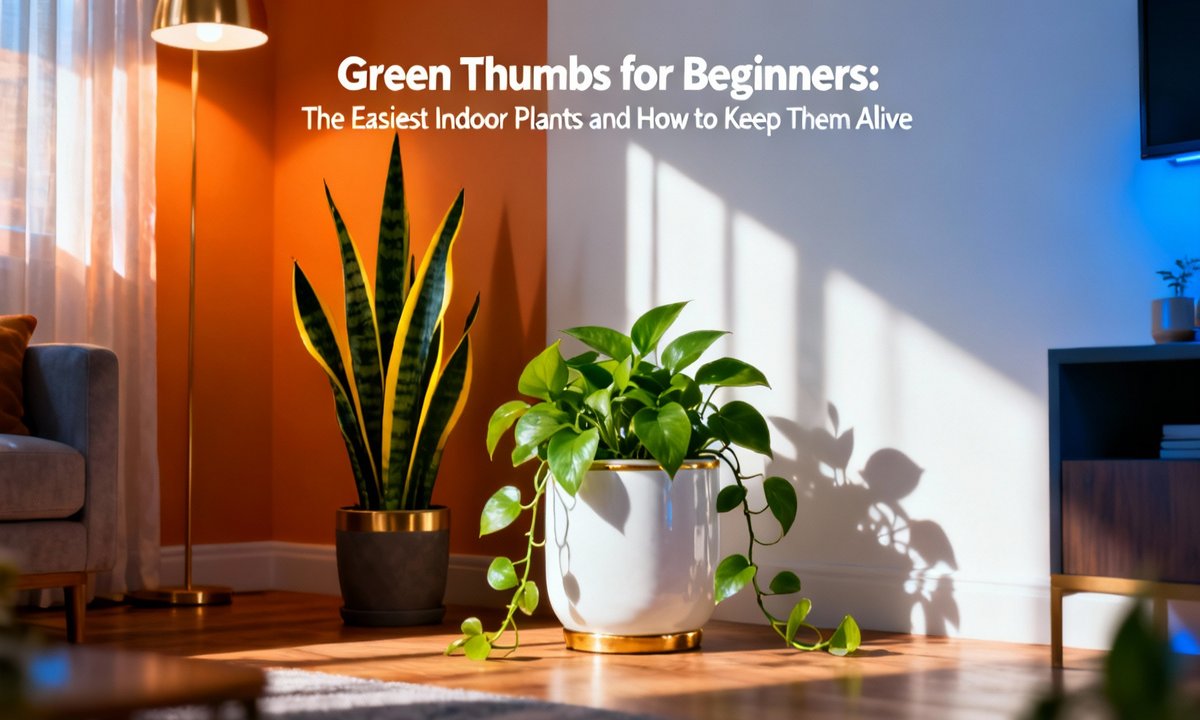Indoor gardening has blossomed across the United States, inviting nature into our homes and daily routines. Whether you are hoping to brighten a windowless nook or simply want to test your green thumb, easy indoor plants can transform your living space, boost air quality, and even lift your mood. Starting with beginner houseplants is not only rewarding but extremely accessible, even if you’ve never owned a plant before.
The best indoor plants for beginners require minimal effort and offer maximum payoff. With the right selections, you will discover that plant care is less about complicated methods and more about observing your leafy friends. Plants can also complement your home’s aesthetic; see how greenery fits stylishly into energy-efficient decor ideas for added inspiration.
Why Start Indoor Gardening as a Beginner?
The popularity of low-maintenance plants continues to grow, making self-care and eco-friendly living both easy and fun. Being surrounded by vibrant greenery can offer numerous benefits for your home environment.
Greenery can significantly improve air quality by filtering out toxins present in your indoor spaces. This natural purification helps create a healthier atmosphere for everyone. Furthermore, nurturing plants has been shown to reduce stress and elevate overall well-being.
Plants instantly update your décor with vibrant, natural hues, adding a touch of life and freshness. Even if space or budget is limited, you have options. Pairing plants with budget-friendly decor upgrades means you can enjoy a fresh, lively atmosphere regardless of where you live.
Top Easy Indoor Plants for Beginners
Selecting the right starter houseplants is an important first step. Below, you will find a quick introduction to some of the best beginner plants, noted for their forgiving nature and low-maintenance requirements, making them ideal choices for new plant parents.
Pothos (Epipremnum aureum)
Pothos is adored for its cascading green leaves, often accented with streaks of white or yellow, adding a cheerful touch to any room. It adapts well to a range of lighting conditions, thriving in bright, indirect light but also tolerating shadier corners with ease.
To keep your Pothos healthy, let the soil dry before each watering, as too much moisture can lead to root rot. If the leaves begin to droop, your plant is likely thirsty and needs a drink. Yellow leaves, however, often signal overwatering. Learn more about Pothos care and other beginner plants.
Spider Plant (Chlorophytum comosum)
Spider plants are classic beginner houseplants, known for their distinctive appearance. Their striped green-and-white foliage spills gracefully over pot edges, sometimes producing tiny “spiderettes” that can be propagated.
These plants prefer bright, indirect light but can also tolerate partial shade. Allow the top inch of soil to dry before watering to prevent issues. If you notice brown tips on the leaves, it might indicate low humidity, which can be remedied by grouping plants together or adding a pebble tray. For more details, see this helpful resource.
ZZ Plant (Zamioculcas zamiifolia)
ZZ plants are remarkably resilient, nearly indestructible, and thrive even if you occasionally forget to water them. Their deep green, waxy leaves stand out, adding a sophisticated touch to any room.
Adapted to low-light indoor spaces, the ZZ plant simply requires the soil to dry out thoroughly between waterings. If you observe yellowing leaves, it’s usually a clear sign of overwatering, so reduce the frequency. Curious about tough plants that can withstand neglect? Here’s a helpful beginner’s guide to growing plants indoors.
Snake Plant (Sansevieria sp.)
With tall, upright leaves detailed with bold green-yellow patterns, snake plants are an easy win for newcomers to indoor gardening. Their striking appearance adds architectural interest to any space.
They tolerate everything from dimly lit bedrooms to sunny offices and rarely need watering, with every couple of weeks generally doing the trick. Their remarkable resilience makes them perfect for busy lifestyles or if you are prone to forgetfulness. Interested in simple houseplant care that fits a relaxed schedule? Explore expert tips for hassle-free plant ownership.
Chinese Evergreen (Aglaonema)
Chinese Evergreens earn high marks for their stunning foliage and notable air-purifying powers. Their broad leaves vary wonderfully in color and pattern, brightening up any space with their vibrant display.
Place them in low to bright indirect light and keep the soil lightly moist, ensuring it is never soggy. A word of caution: this plant, like a few others, is toxic to pets, so it is best to place it out of reach of cats and dogs for their safety. Further reading on beginner-friendly indoor plants can provide more insights.
Madagascar Dragon Tree (Dracaena Marginata)
Looking for a touch of drama and height in your plant collection? The Madagascar Dragon Tree brings elegant height, graceful movement, and tropical vibes to any room. Its slender stems and spiky leaves create a natural focal point.
This plant needs moderate light and prefers the soil to be slightly moist, without being overly fussy. Just be cautious if you have furry companions, as this plant is best kept away from pets due to its toxicity. Check more about pet-safe care alternatives for your home.
Aloe Vera
Aloe vera is the quintessential succulent for beginners, known for its practical and aesthetic benefits. Not only does it offer soothing gel for mild burns, but it is also exceptionally drought-tolerant, making it easy to care for.
Simply provide it with bright, indirect sunlight and allow its soil to dry completely between waterings. Overwatering is this plant’s only real downfall, so always check the soil moisture. Want the basics on succulent care to ensure your plant thrives? Find them here.
How to Keep Indoor Plants Alive: Plant Care Tips for Beginners
Caring for indoor plants does not need to be overwhelming. You can focus on a few quick and essential plant care tips to ensure your green friends thrive and flourish in your home environment.
Water Responsibly
Always touch the soil before watering to gauge its moisture level. If it feels dry two inches down, it is generally time to water your plant. Drainage is crucial; never leave pots sitting in water, as this is a top reason for root rot and can quickly damage your plant.
Choose the Right Spot
Research whether your plant is a low-light houseplant or prefers indirect sun to ensure optimal placement. Windowsills, shelves, and corners can all work well, depending on the specific light requirements of your plant species. Remember to rotate your pots every couple of weeks for even growth and symmetrical development.
Pick Proper Soil and Pots
Always use well-draining soil specifically blended for indoor plants or succulents, as this provides the right environment for healthy roots. Pots with drainage holes are essential as they prevent roots from suffocating in standing water, which is a common problem.
Mind Humidity
Many indoor favorites, especially tropical plants, appreciate moderate humidity levels to truly thrive. You can mist your plants occasionally or group them together to help maintain ambient moisture around them.
Keep it Clean
Gently wipe leaves with a damp cloth every so often to remove accumulated dust. This simple act maximizes their ability to photosynthesize, allowing them to absorb light more efficiently and stay healthy.
Don’t Panic Over Mistakes
Most easy beginner plants are remarkably forgiving. They will generally tolerate an occasional missed watering or an unintentional dry spell, bouncing back with a little consistent care. Discover more about using plants to improve your home’s comfort and efficiency.
Common Mistakes to Avoid
Beginners often encounter hurdles, but knowing what to look out for can help you sidestep them. Understanding these common pitfalls will make your indoor gardening journey much smoother and more successful.
A frequent mistake is Overwatering: most low-maintenance plants unfortunately die from too much water, rather than too little. Also, Ignoring Drainage can be problematic; waterlogged roots cannot breathe, which quickly leads to disease and plant decline.
Wrong Placement is another issue; it is crucial to match the light requirements to your plant’s specific needs for optimal growth. Finally, Skipping Repotting can hinder development; as your plant grows, repotting prevents crowded roots, allowing it to continue flourishing.
Take heart: Learning is an essential part of the process, and these DIY tips for renters can help you confidently change up your green space without long-term commitments, encouraging experimentation.
Frequently Asked Questions: Indoor Plant Survival
Q: What is the easiest plant to keep alive indoors?
A: The snake plant (Sansevieria) is nearly indestructible and often thrives on neglect, making it perfect for beginners seeking a low-effort option.
Q: Why are my plant’s leaves turning yellow?
A: Most often, yellowing leaves mean overwatering. It is important to let the soil dry thoroughly between waterings and ensure your pot has proper drainage to prevent this issue.
Q: Is there an indoor plant safe for pets?
A: While many indoor plants can be toxic, options like the spider plant and some ferns are generally considered pet-safe. Always check specifics about any plant before bringing it home, especially if you have curious pets.
Q: How can I keep my plants dust-free?
A: To maintain their health and appearance, wipe leaves gently with a damp cloth every few weeks. This helps them breathe better and look their absolute best.
Q: Can I grow plants in low light?
A: Absolutely! The ZZ plant, snake plant, and pothos are all easy plants to care for in low-light indoor spaces, proving that you do not need bright sun to enjoy greenery.
Q: What tools do I need as a beginner?
A: To start, a watering can, a spray bottle for misting, and clean scissors or pruners are typically all you need. Keeping it simple is often the best approach for new plant enthusiasts. You’ll find more organization and plant-friendly tips here.
Resources & Further Reading for Beginner Plant Enthusiasts
Jumpstart your green journey by discovering even more useful resources designed to help you succeed. These guides offer deeper insights and practical advice for cultivating your indoor garden.
* Swanson’s Nursery: Houseplants for Beginners
* This Old House: Indoor Plants for Beginners
* Homestead Brooklyn: Growing Plants Indoors
* Gardening Know How: Beginner Houseplants
* Pick up Limes: Houseplant Care for Beginners
For creative ways to display your plants and make your home eco-chic, do not miss our guide on sustainable home decor or see how to maximize style and comfort with thoughtful design choices.
Final Tips for Success With Easy Indoor Plants
To ensure a rewarding experience with your easy indoor plants, consider these final pieces of advice. They are designed to build your confidence and foster a thriving green space.
Start with just one or two types of plants to build your confidence and learn their specific needs before expanding your collection. Place your new houseplants where you see them daily; this makes it much easier to remember their care routines.
Consider using simple checklists or a printable plant care guide to help you stay organized. Sharing your progress with friends or on social media can also be motivating, as the indoor plant community is welcoming and full of helpful advice.
Nurturing indoor greenery is a journey, so do not stress about minor setbacks; even seasoned plant parents face the occasional wilted leaf. If you are looking for budget-friendly ideas, explore more tips in our ultimate frugal living guide for a well-rounded approach to home and life.
Ready to embrace a lush, greener life? Dive into our resources, join the plant community, and let your green thumb flourish. If this guide inspired you, check out our newsletter subscription for printable plant checklists, monthly care reminders, and vibrant decor ideas updated just for beginners like you!
Happy growing!


